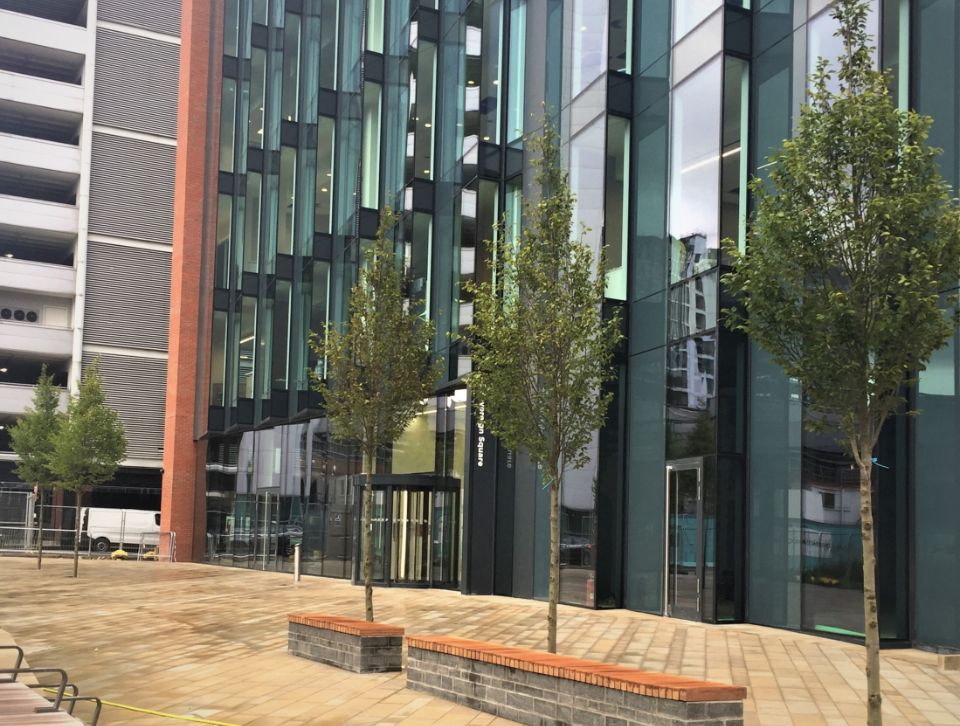The “superblock” renovation, built above an underground parking structure, utilized Silva Cells for soil volume benefits
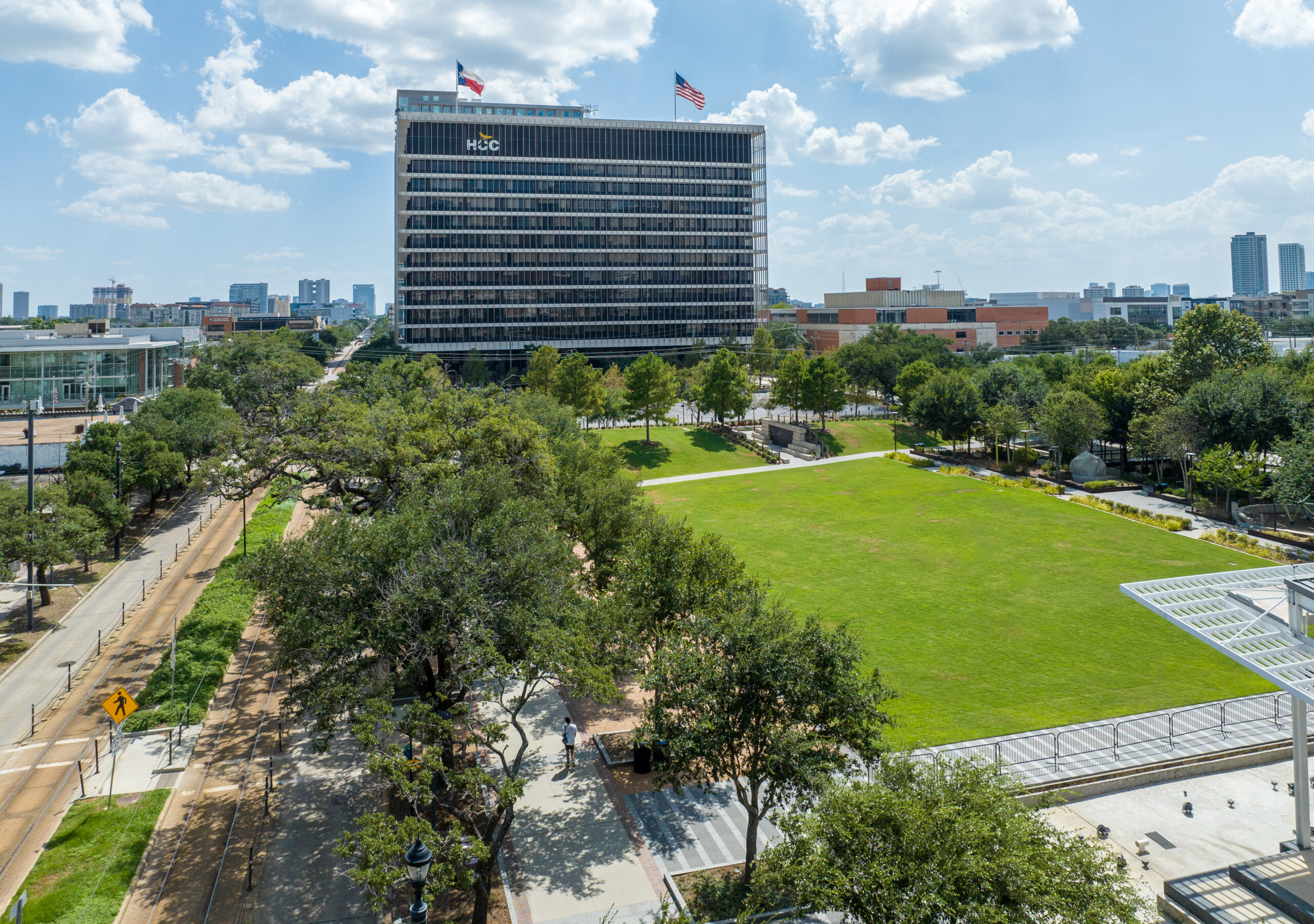
Located just southwest of Downtown Houston, the Midtown neighborhood had until recently been an “inhospitable urban environment with few amenities.” A six-acre stretch of land between McGowen Street and Anita Street was particularly spare with an undeveloped and overgrown plot serving as illegal parking for employees of nearby businesses. In the early 2010s, however, a public-private initiative sparked a reinvigoration project for this underutilized “superblock” — and Midtown Park was born. This award-winning, multi-use green space has reinvigorated the district — and its sustainability efforts include an innovative stormwater treatment “bayou” feature built right into the park. The new plaza trees, however, did present a challenge to project planners, as the entire park is built upon an underground parking facility: the team at Design Workshop thus specified Silva Cells to provide support for the pedestrian hardscapes while simultaneously creating the soil volume necessary (between the garage and walking level) for healthy, mature tree growth.
Number of Silva Cells: 342 (1x) / 252 (2x)
Number of Trees: 21
Type of Project: Park, Plaza, On Structure
Project Designer: Design Workshop
Project Contractor: Millis Development and Construction
Installation Date of Silva Cells: 2016
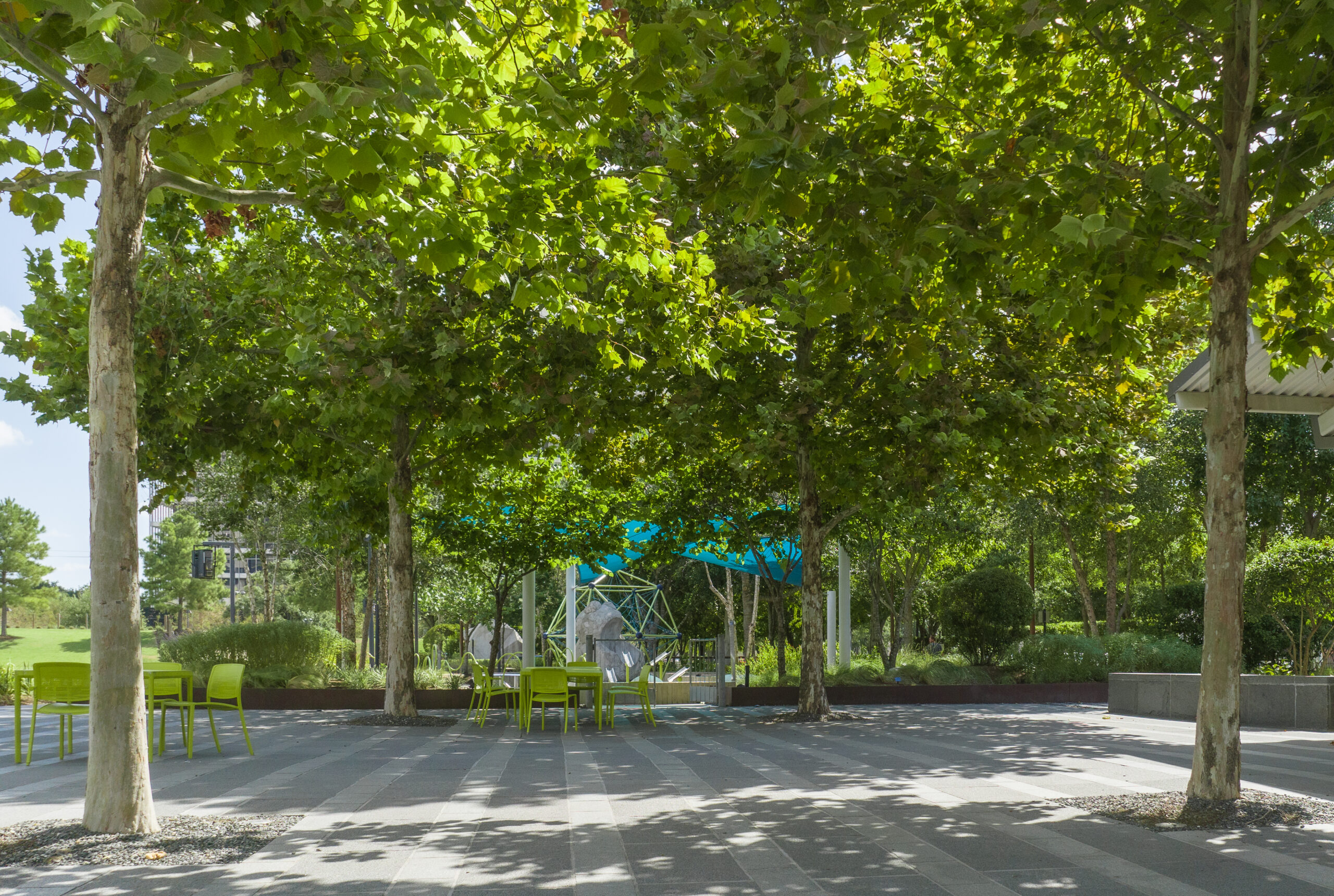
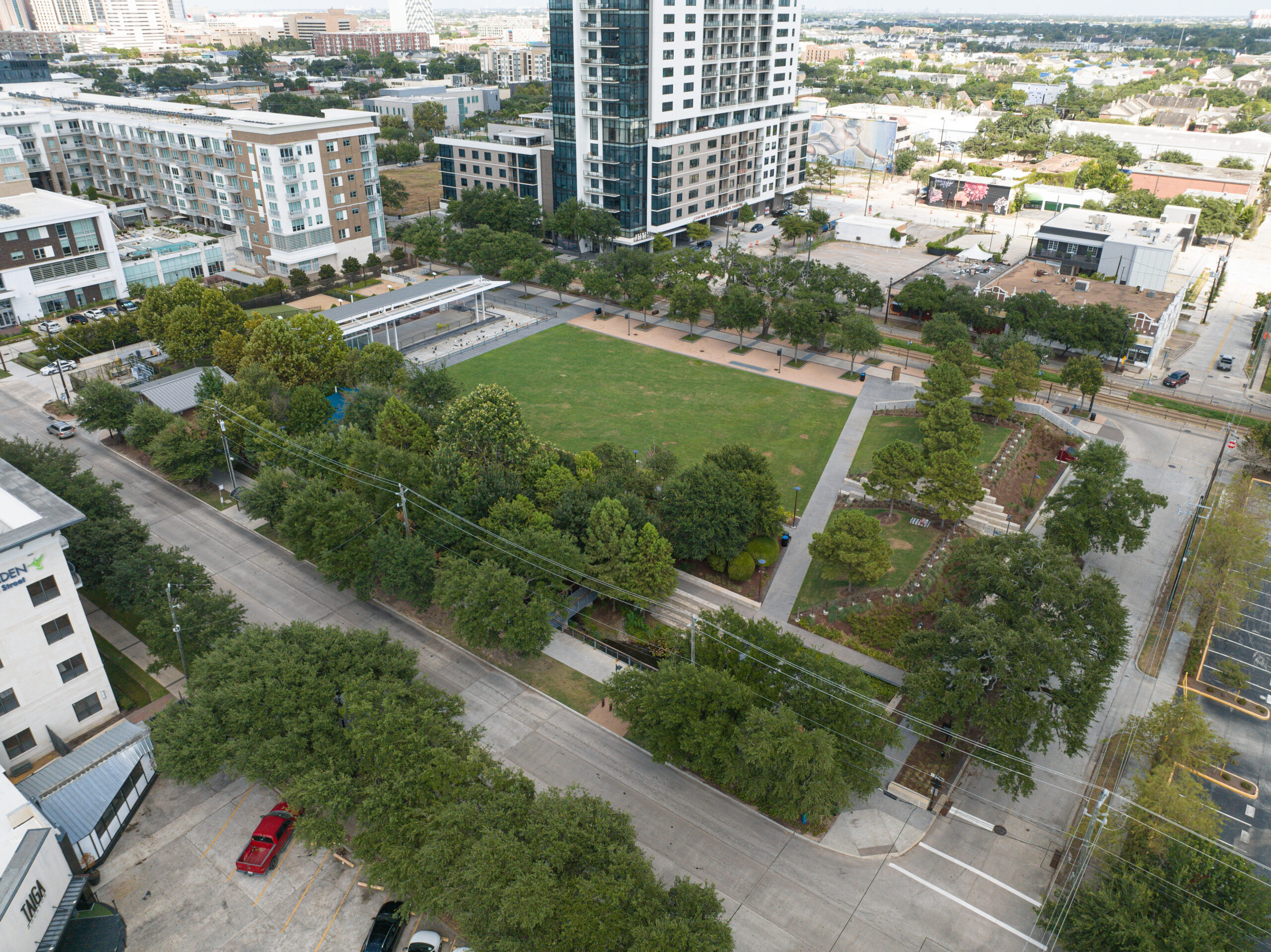
Connected to the downtown core by a short Metro light-rail ride, the Midtown district — located in southwestern Houston — was a fairly spare urban center through most of the late 20th and early 21st century: concrete high-rises and very few pedestrian-friendly features. Along Main Street, between McGowen and Anita, was an especially ignored parcel of land: a long “superblock” with six acres of vacant, overgrown space utilized primarily for illegal parking.
As part of a larger Houston initiative to make the city more connected, welcoming, and sustainable, a public-private renovation project was launched in 2010 with the ultimate goal of creating a Central Park-style, mixed-use gathering space for Midtown residents. Design Workshop was tasked with building a landscaping plan for the area which, in desperate need of inviting greenery, was also short of parking.
The team envisioned a multi-purpose open lawn surrounded by green features in addition to new restaurants, trails, a dog park, a marketplace, and a sustainable water element — all situated above an underground parking garage. To ensure the new park trees that were planted in and around the walkways had appropriate access to soil volume in this complex on-structure application, project planners turned to the DeepRoot Silva Cell.
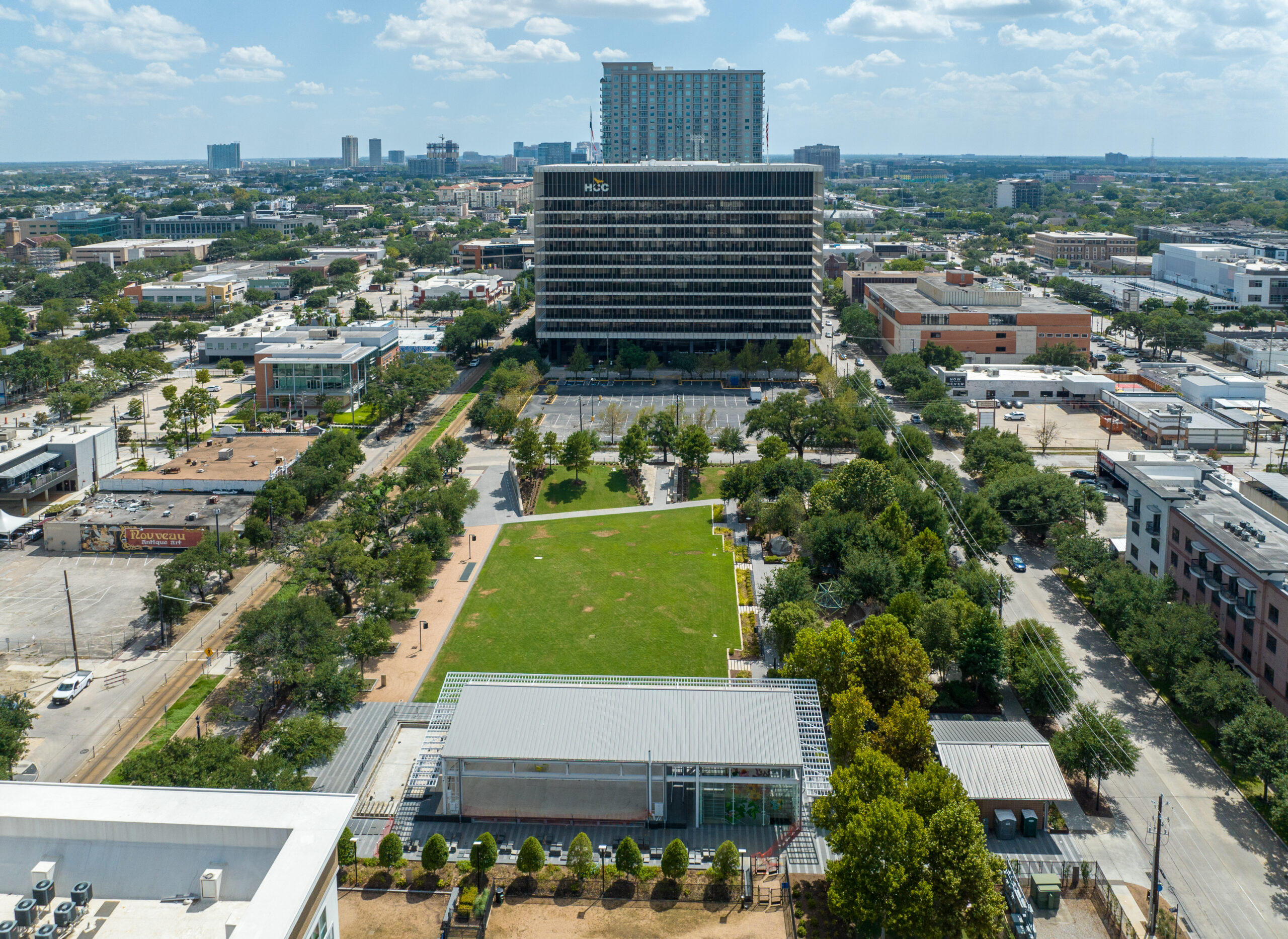
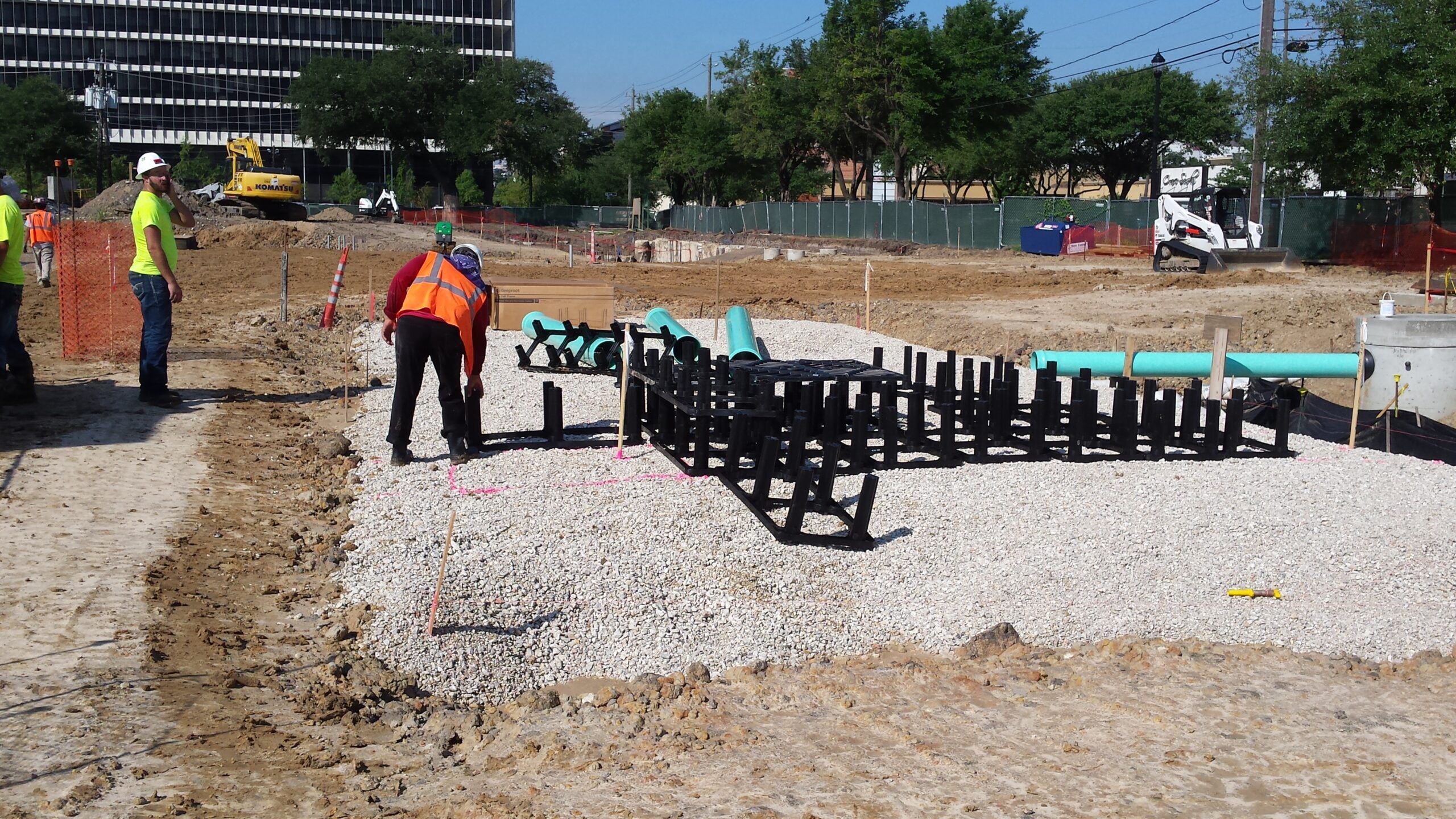
“Placemaking and resilience” were at the top of the priority list for the team at Design Workshop. The open lawn is surrounded by art features, gathering space, and walkways — indeed, Midtown Park and its pedestrian-friendly layout has helped the neighborhood, against all odds, become known as the “most walkable place in Houston.”
The development included multiple phases of Silva Cell installations in and around the new park, beginning in 2016. In total, 594 Silva Cells were utilized in support of 21 new trees — this strategy ensured that the on-structure tree plantings could grow to healthy maturity, as noted by an ASLA overview of the project:
The park design creates an environment where trees and gardens thrive in adequate soil volumes. A living, sustainable park above an underground parking garage with an intricate system of draining capabilities.
In addition to the well-supported urban forest, Midtown Park also incorporated a functional water feature into its design: the “bayou,” a water detention system (and channel) mimicking the natural wetlands and swamps of Houston. It features a 70,000-gallon cistern for stormwater detention, which is then used for irrigation and recirculation before being released into the municipal sewer system. The bayou has treated 132,000 gallons of water (as of 2022) and protects against flooding during major rainfall events.
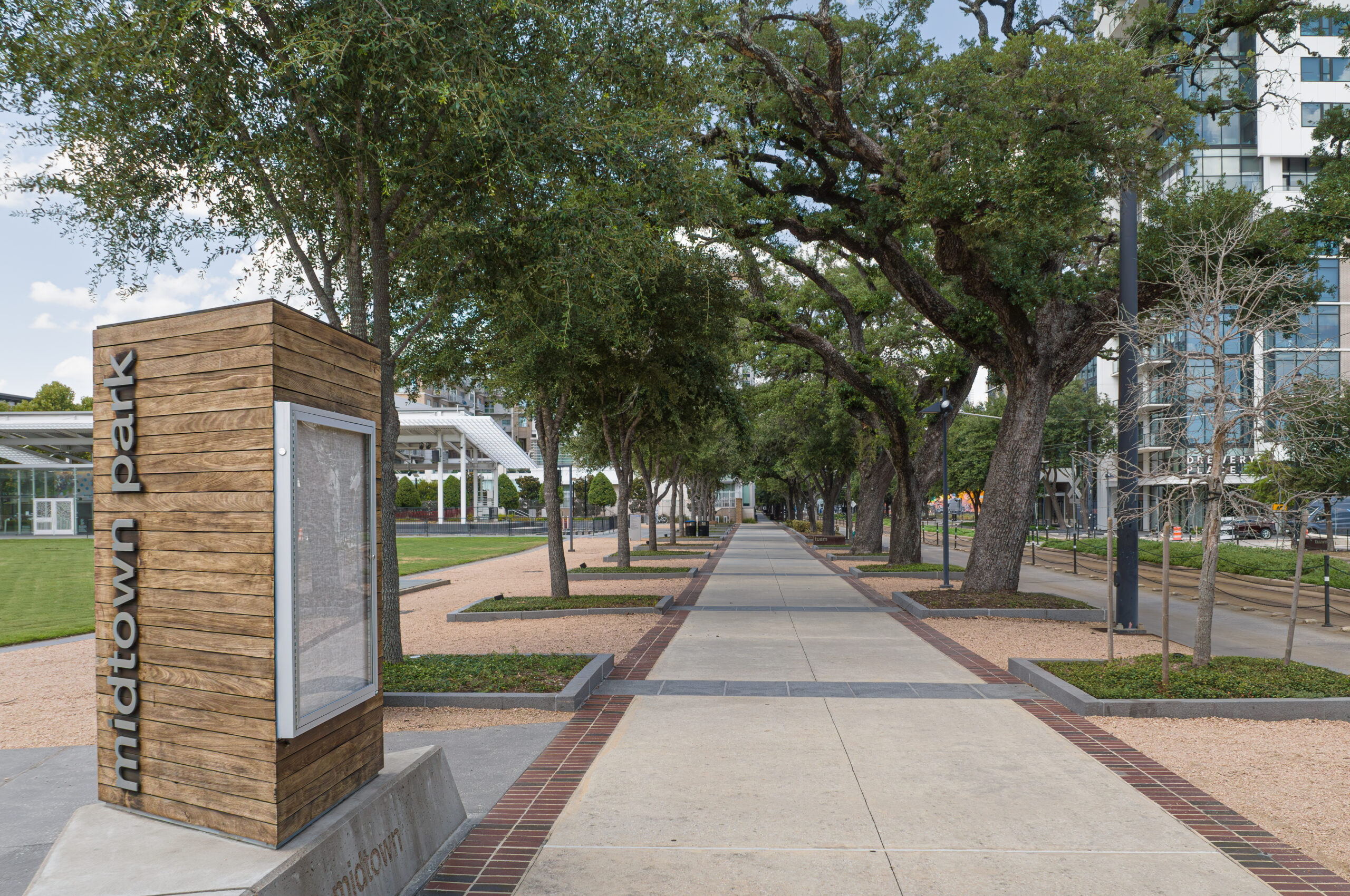
The park has quickly become the jewel of the neighborhood. Indeed, it was unofficially opened to the public for the first time during February 2017’s Super Bowl festivities, wowing residents with the complete transformation of the previously neglected “superblock.” And its green features are sure to help in Houston’s fight against climate change — and the innovative development is a multiple award winner, including receiving both national and ASLA Honor Awards.
-ASLA (National) Honor Award
-ASLA (Texas) Honor Award
-APA Texas Project Planning Award
-ULI Houston Development of Distinction (Open Space Category)
-ULI Houston Development of Distinction (People’s Choice Award)
-ULI Americas Award of Excellence (Finalist)
For more DeepRoot projects in Texas, check out our case studies here, here, and here.
